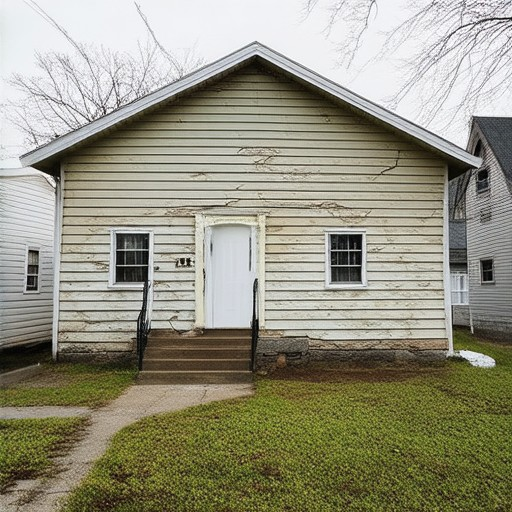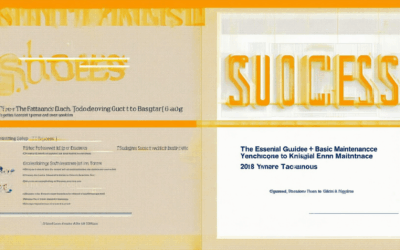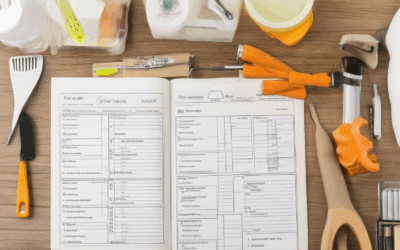Household repairs can often catch us off guard, leaving us wondering how to proceed and whether we’re making the best decisions. Whether you’re dealing with a small leak or a major system failure, understanding the costs involved and the best solutions is crucial. This guide offers household repair advice to help you navigate common issues, understand potential expenses, and explore payment options to keep your home in top shape. From budgeting strategies to finding affordable fixes, we’ll cover everything you need to know to maintain your home efficiently. Discover how to manage repair costs, leverage available resources, and stay prepared for emergencies. With this comprehensive guide, you’ll be equipped to tackle any household repair with confidence and peace of mind.
Strategic Approach to Home Repair Savings
- Determine Home Value and Apply the 1% Rule:
- Calculate 1% of your home’s value annually for routine maintenance. For a $200,000 home, this means setting aside $2,000 yearly. This fund covers minor repairs, appliance replacements, and system inspections.
- Establish an Emergency Fund:
- Set aside 0.5% to 1% of your home’s value for unexpected repairs. For the same $200,000 home, this translates to $1,000 to $2,000. This buffer helps address unforeseen issues without impacting your general maintenance fund.
- Implement a Budgeting System:
- Use financial tools like Mint or spreadsheets to track and categorize repair expenses. This ensures transparency and helps in managing your repair budget effectively.
- Consider Local Regulations and Incentives:
- Check state-specific requirements for building codes or tax incentives related to home repairs. These could offer additional savings or financial support.
- Invest in Energy Efficiency:
- Allocate part of your repair budget to upgrade to energy-efficient systems and appliances. Research ROI to identify worthwhile improvements that enhance long-term savings.
- Consult Professionals for Cost Estimates:
- Obtain quotes from reliable contractors to understand local repair costs. This data helps adjust your savings strategy accurately.
- Reassess and Adjust Budget Annually:
- Review your home’s condition and value annually. Adjust your maintenance and emergency funds as needed, especially considering the age of your home and specific repair needs.
- Prioritize Repairs Wisely:
- Address urgent issues first to prevent more severe problems. Balance immediate fixes with longer-term maintenance to optimize resource allocation.
- Evaluate Financial Options:
- Weigh the costs of loans against potential ROI from improvements. Consider whether borrowing is financially beneficial given the property’s value growth.
By integrating these strategies, you can effectively manage home repair costs, ensuring readiness for both planned and unexpected maintenance needs while maintaining your home’s value.

Most Expensive Home Repairs
- Kitchen Renovation: Includes cabinetry, appliances, and countertops, often costing thousands.
- Bathroom Remodel: High-end fixtures, tiles, and plumbing can add substantial expenses.
- Plumbing Replacement: Especially for water heaters and major pipe work, which can be labor-intensive.
- HVAC System Installation: New furnaces or AC units, especially energy-efficient ones, can be costly.
- Electrical Rewiring: Updating older systems or adding circuits requires skilled labor and materials.
- Roof Repair/Replacement: Particularly for older roofs or those needing complete replacement.
- Asbestos Removal: Necessary in older homes and can be a significant expense.
- Driveway/Patio Installation: Using premium materials can lead to high costs.
- Structural Repairs: Addressing foundation issues requires specialized expertise and materials.
- Appliance Installation: Large items like pools tables or spas involve heavy lifting and labor fees.
- Exterior Updates: New windows or siding can be expensive but vary based on material quality.
Most Common Home Repairs
The most common home repairs vary by property type and individual needs, but several issues frequently arise due to normal wear and tear or unexpected damage. Here’s a breakdown of the typical repairs homeowners encounter:
- Plumbing Issues : Leaky pipes, clogged drains, and malfunctioning water heaters are among the most frequent repairs.
- Electrical Problems : Faulty circuit breakers, dead outlets, and lighting fixture issues require attention.
- Heating, Ventilation, and Air Conditioning (HVAC) : Heating systems failing, air filters needing replacement, and ductwork issues are common concerns.
- Exterior Repairs : Roof leaks, fence damage, and gutter problems are prevalent in many homes.
- Appliance Malfunction : Refrigerators, dishwashers, and laundry machines often need repairs or servicing.
- Foundation Cracks : Small cracks in the foundation can indicate underlying structural issues.
- Landscaping and Yard Work : Fixing fences, installing sprinklers, and lawn care are routine tasks.
- Window and Door Repairs : Broken windows, stuck doors, and damaged screens require immediate fixes.
- Painting and Wall Repairs : Patching holes, touching up peeling paint, and repairing drywall are common tasks.
- Electrical Wiring : Upgrading or rewiring older systems to meet modern safety standards is often necessary.

What to Do If You Can’t Afford House Repairs
If you’re struggling to afford home repairs, there are several steps you can take to address the situation:
1. Explore Free or Low-Cost Resources
- Contact your local housing authority for affordable repair programs.
- Check with local churches or nonprofit organizations that may offer assistance.
- Inquire at local charities or NGOs specializing in home repair support.
2. Apply for Government Assistance
- Look into federal programs like SNAP or TANF, which may provide financial aid for repairs.
- Apply for energy assistance programs to help cover utility costs during repairs.
- Contact FEMA for disaster recovery assistance if applicable.
3. Seek Grants and Financial Aid
- Research local and national grants specifically for homeowners in need.
- Apply for state-specific homeowner assistance programs.
- Consider crowdfunding platforms to raise funds for repairs.
4. Utilize DIY Solutions Temporarily
- Fix minor issues yourself using readily available materials.
- Prioritize safety repairs to prevent further damage or health risks.
5. Reach Out for Professional Help
- Contact local NGOs or volunteer groups that specialize in home repairs.
- Ask neighbors or local communities for assistance or tool lending.
- Hire affordable contractors or volunteers with the necessary skills.
6. Explore Community and City Resources
- Visit your local community center or city hall for available programs.
- Join online forums or social media groups for local support networks.
- Utilize city or town websites for resources and services.
7. Consider Alternative Living Arrangements
- Stay with friends or family temporarily while repairs are made.
- Look into temporary housing options if repairs are extensive.
By exploring these options, you can address your home repair needs while managing financial challenges effectively.

How Much Money Should You Have for Home Repairs?
Determining the appropriate amount to set aside for home repairs involves considering various factors, including the size of your home, its age, and the likelihood of needing major or minor repairs. Here’s a breakdown:
- General Maintenance Fund : Experts generally recommend setting aside 1% to 2% of your home’s value annually for routine maintenance. This covers expenses like roofing repairs, plumbing issues, and appliance replacements, which can range from a few hundred to several thousand dollars depending on the scope.
- Emergency Fund : For unexpected repairs, such as a broken water heater or structural damage, having an emergency fund is crucial. A common recommendation is to allocate 0.5% to 1% of your home’s value for this purpose.
- Tracking and Budgeting : Create a dedicated budget category for home repairs to monitor spending and ensure funds are used efficiently. Consider using financial tools or apps designed for home maintenance budgeting to keep track of your expenses.
- Local Regulations : Check for any state-specific requirements or incentives that may affect your savings strategy, such as local building codes or housing regulations that might dictate minimum savings amounts.
- Energy Efficiency Upgrades : Allocate part of your repair budget for upgrading to more energy-efficient appliances or systems, as these improvements can lead to long-term cost savings.
- Professional Consultation : To get a clearer picture, consult with professionals or utilize services that provide home repair estimates to understand average costs in your area, allowing you to adjust your savings goals accordingly.
Aim to establish a balance between a general repair fund and an emergency reserve to ensure financial preparedness for both planned and unexpected home maintenance needs.
The 1% Rule for Home Maintenance
The 1% rule for home maintenance is a simple yet effective strategy to help homeowners budget for ongoing maintenance tasks. Here’s a breakdown of how it works:
- Calculate 1% of Your Home’s Value: Determine 1% of your home’s current appraisal value. For example, if your home is valued at $200,000, you would set aside $2,000 annually.
- Annual Budgeting:** Allocate this amount yearly for maintenance activities. This fund covers routine repairs, replacements, and improvements needed to keep your home in good condition.
- Examples of Maintenance Tasks:
- Minor repairs (e.g., fixing a leaky faucet)
- Replacing worn-out appliances
- Updating outdated fixtures
- Inspecting and servicing systems (HVAC, plumbing, electrical)
- Gardening and landscaping maintenance
- Adaptability:** The 1% rule provides a general framework, but adjustments may be necessary based on your home’s unique needs. Older homes may require more frequent maintenance, while newer homes might need less.
- Reassessment:** Periodically review your home’s value and maintenance needs. Adjust your budget accordingly to reflect changes in your home’s condition or market value.
By following the 1% rule, you can manage home maintenance costs effectively, ensuring your property remains in excellent shape and retaining its value over time. Create a checklist of annual tasks to stay organized and budget wisely for future needs.

How Do People Pay for Expensive Home Repairs?
People typically pay for expensive home repairs through several methods:
- Savings or Emergency Fund: Many individuals opt to use money saved specifically for unforeseen home repair costs.
- Bank Loans: Taking out a loan from a financial institution can provide the necessary funds for repairs.
- Home Equity Loan: Homeowners with significant equity may choose this option to access funds for repairs.
- Credit Cards: While not ideal due to high interest rates, some use credit cards for immediate repair needs.
- Payment Plans: Service providers often offer flexible payment plans to make expensive repairs more affordable.
- Insurance Policies: Homeowners can sometimes use insurance to cover repair costs if the damage is covered under their policy.
- Crowdfunding: Online platforms like GoFundMe have been used to raise funds for unexpected home repairs.
- Local Assistance Programs: Checking with local governments or non-profits may provide financial aid for those in need.
Conclusion: Planning ahead and exploring all possible funding options are crucial when facing expensive home repairs. Whether through personal savings, loans, or insurance, there are multiple avenues to address these needs effectively.




0 Comments